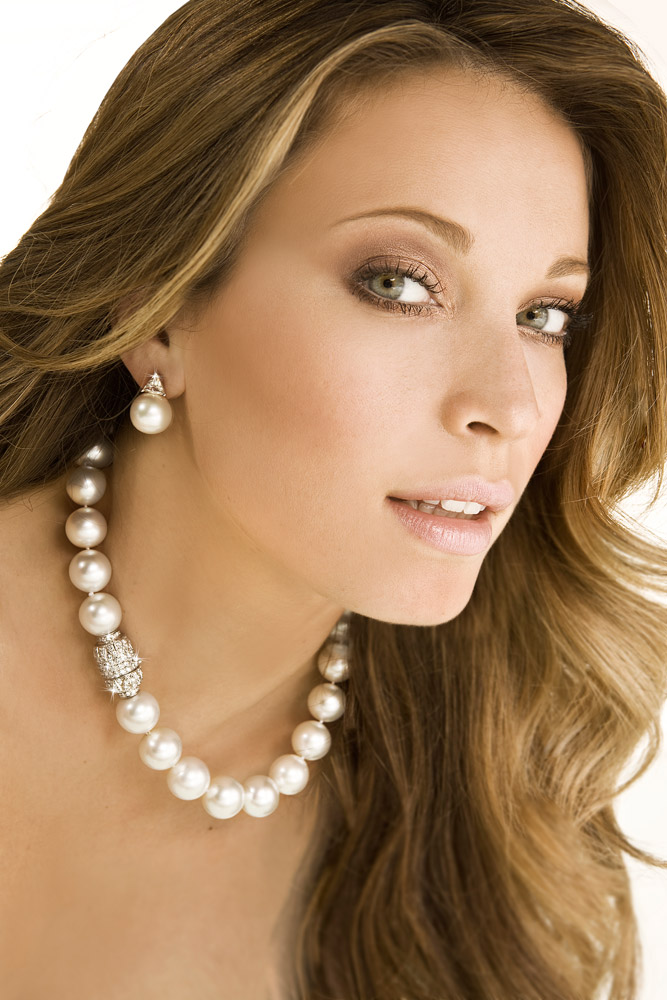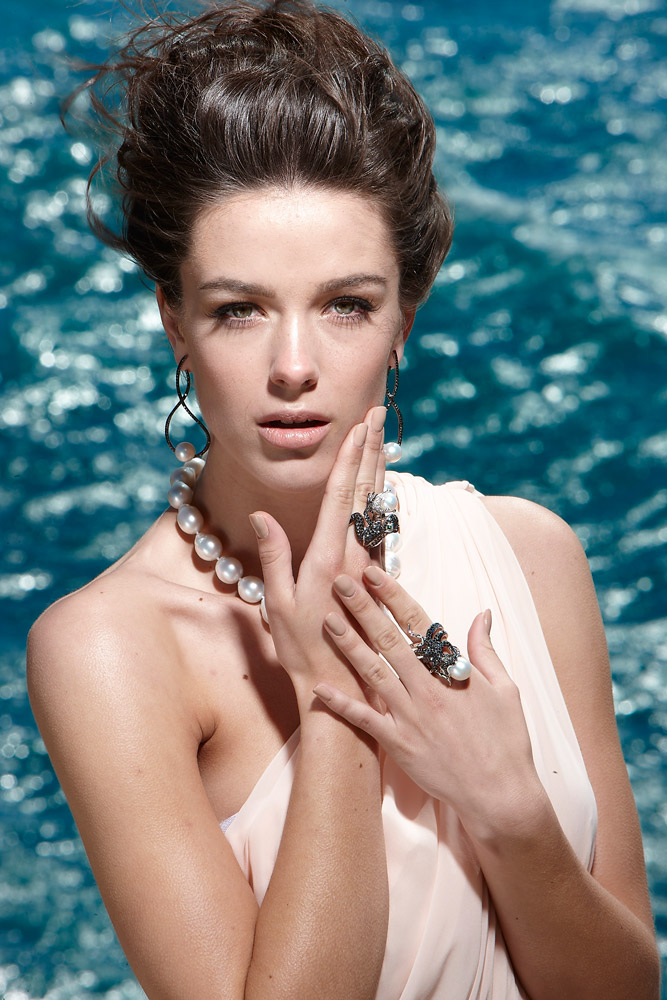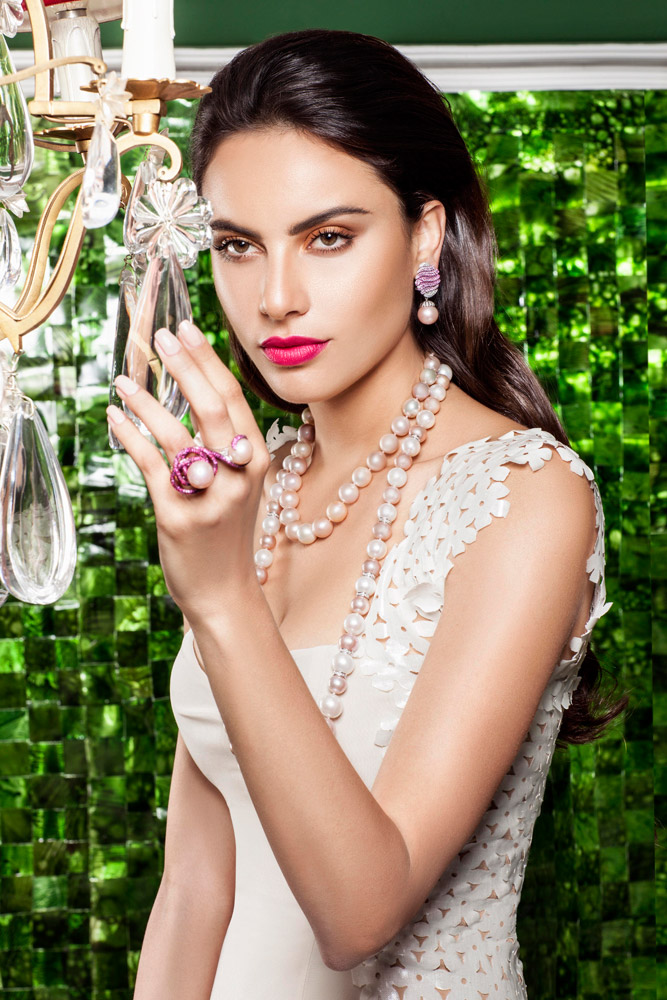Perfectly created by nature and requiring no human assistance to enhance their beauty, pearls were the first gems coveted by prehistoric people. Found by chance while opening shells for food, early humans were enchanted by the luminous glow emanating from these gifts of the sea.
As civilizations grew, both men and women began to appreciate beauty and personal adornment. Pearl jewelry became the gem of choice for the highest echelons of societies around the world. Pearls are even mentioned in the Talmud and the Bible, where in early Hebrew translations, dress provided to Adam and Eve is called “as beautiful as pearls.”
A fable published in Pliny the Elder’s Natural History sums up the value of pearls in early history. It tells of a wager between Marc Antony and Cleopatra in 41 B.C. Cleopatra bet she could host the most expensive banquet in history. The next day, as the banquet neared its end, Antony said that while it was a fine meal, it was nowhere near the most expensive ever.
But Cleopatra wasn’t done. She removed one of her pearl earrings and dropped it into a goblet of wine. The pearl was so large and rare that it was worth 10,000,000 sesterces, or the value of fifteen countries—a true fortune. The pearl dissolved and Cleopatra drank the wine. Antony conceded defeat. The value of that single drink, let alone the banquet, had indeed been more than any banquet in history.
The monetary value of pearls restricted ownership of them throughout history. Only kings, queens and other elites could afford them. In many societies ownership was even restricted by law.
Pearl diving was once the prime industry in the Persian Gulf and in many areas of Asia and the Americas. Like gold in the California Gold Rush of 1848, when a new pearl bed was discovered, it was quickly fished until nearly all shells were depleted. Millions of shells were collected with hopes of finding the elusive pearl, decimating shell populations around the world. But this all changed with the technical innovation and vision of one man near the turn of the twentieth century—Kokichi Mikimoto.
Kokichi Mikimoto, widely revered as the father of the cultured pearl industry
Kokichi Mikimoto
Mikimoto was born in 1858, the first son of a Japanese noodle vendor. He first became interested in pearls while watching the pearl divers of Ise, on the shores of Toba in Mie Prefecture. At the time, only natural pearls existed. Coaxing shells to create whole pearls was widely seen as biologically impossible.
At the age of 30, Mikimoto began experimenting with the native akoya shell. Using a method developed in China many years earlier, he attached domed nuclei to the inner lips of akoya shells and returned them to the water to grow blister pearls. While these half-pearls were valuable, his dream was to grow whole, round pearls.
In 1905, Mikimoto happened upon a discovery. By wrapping a nucleus in the mantle tissue of a donor mollusk (the tissue that grows just under the lip of the shell) and implanting it into a live host, an occasional whole pearl would develop. Unbeknownst to Mikimoto, this mantle tissue contained epithelial cells, which are the cells that produce nacre. “Nacre” is what mollusk shells and pearls are composed of.
Through more experimentation and further discoveries by two other Japanese citizens at the time, a new method was developed. In 1916, a new industry was born.
Fast forward 100 years and the cultured pearl industry has completely replaced diving for natural pearls. Today all pearls, with very rare exceptions, are cultured on pearl farms around the world. While the techniques vary, Mikimoto’s discovery remains the foundation of the pearl farming industry.
What is a Pearl?
A pearl is a hard object grown in either the soft mantle tissue or the gonad of a living shelled mollusk. Just like the host shell, a pearl is composed of nacre, which is calcium carbonate deposited in concentric layers and held together with an organic substance known as conchiolin.
Cross section of a cultured freshwater pearl sawed in half, courtesy of little h Jewelry, Los Angeles
Under microscopic examination, the concentric nacre layers are evident in slight textured lines, similar to a fingerprint. While not visible to the naked eye, this texturing causes a slightly gritty sensation when rubbed against the biting edge of a front tooth. This is the easiest way to separate faux pearls from genuine.
Cultured pearls can be divided into two broad categories: pearls grown in salt water and pearls grown in fresh water. While both are beautiful and used extensively in fine jewelry, pearls grown in salt water are considered to be more valuable overall.
In the coming chapters, we will dive deep into all types of cultured pearls to give the reader an expert level of knowledge. But first, let’s debunk a few widely-held misconceptions.
The Term “Cultured”
Although cultured saltwater akoya pearls were the first to be grown on a pearl farm, they are not the only pearls that are cultured. All pearls commercially produced today are cultured pearls. This includes cultured freshwater pearls.
The Oyster
Although pearl oyster is a term commonly used at all levels within the pearl industry, scientifically speaking, most valuable pearls do not come from oysters. True oysters are members of the family Ostreidae. Pearls are grown in saltwater mollusks from the family Pteriidae. While both are bivalves from the phylum Mollusca, only mollusks from Ostridae are true oysters.





